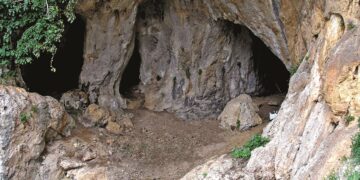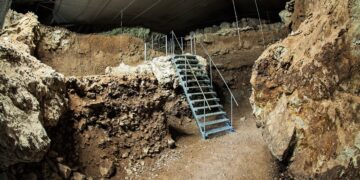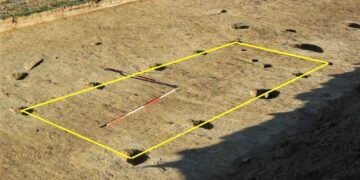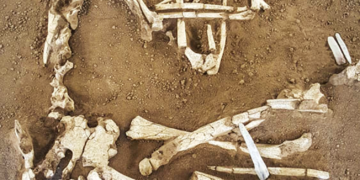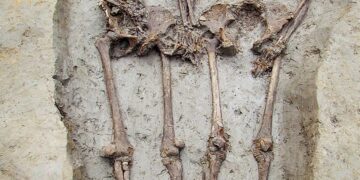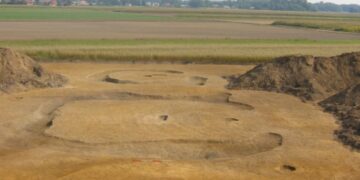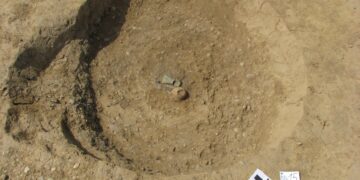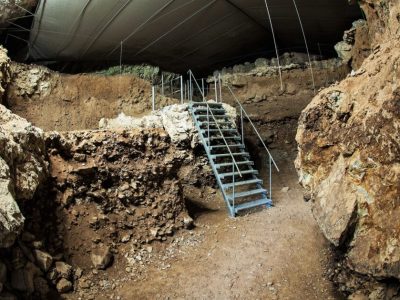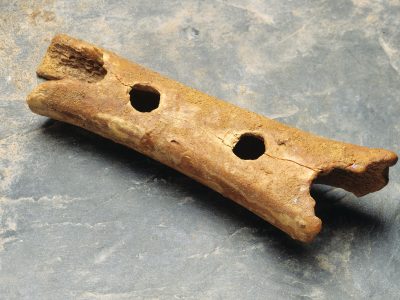One of the most infamous archaeological sites in Slovenia, which produced several sensational discoveries that changed the perception of the past and the scientific methodology we use to describe it, is the cave Divje babe in the valley of river Idrijca in western Slovenia. Made accessible through a narrow path descending from Šebrelje plateau above, this cave is hiding almost 100.000 years of history demonstrating how ancient people adapted to their environment. The most famous discovery was the pierced legbone of a juvenile cave bear indicating the possibility that the late Neanderthals were the first humans to enjoy music. Discovered near a small fireplace this find brings us back to the night or two the hunters spent in the small cave high above the river valley…
The sediments preserved in the cave do not hide only the relicts of human activities but can be also used to document changes in the global climate and regional environment. Perhaps the most intriguing discovery were fossilized remains of cave bear hair discovered in lumps of sediments – witness of the time when it served as a bear den where females spent the winter with their cubs. Numerous juvenile bones demonstrate how hard it was to survive the long winters before food was available again in the spring for these ice age giants.

